A Winter Bivvy on Sgurr a'Mhaoriach
Took on a mountaintop bivvy on Saturday night on Sgurr Coire nan Eiricheallach, a hill at the to the north of Loch Quoich that is commonly climbed before the nearby Munro, Sgurr a 'Mhaoriach. An island in the loch was previously occupied by an outlaw who shared my name - Ewan Macfie. He refused to pay any taxes and took potshots at anyone who approached too close to his island.
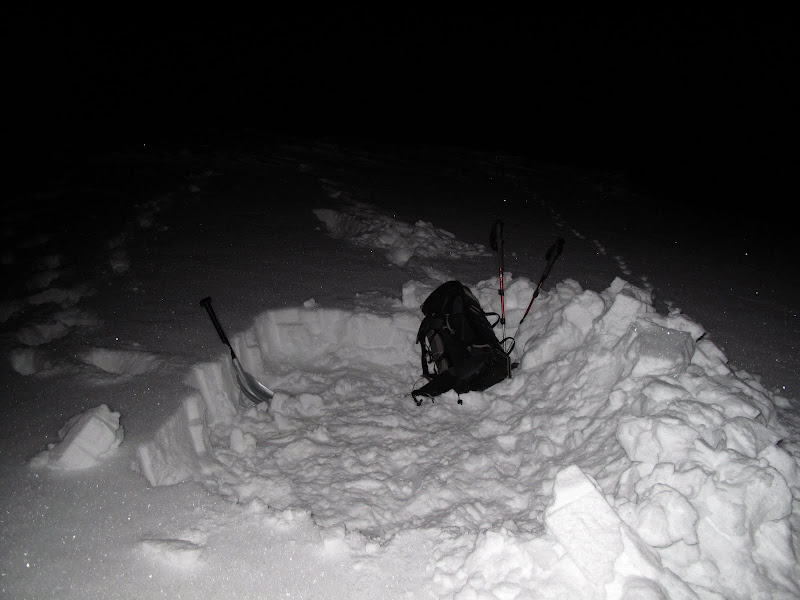
I passed two very pleasant hours approaching the summit by moonlight, arriving just before 2000, and used my snow shovel to excavated a little hollow, as a hare would.
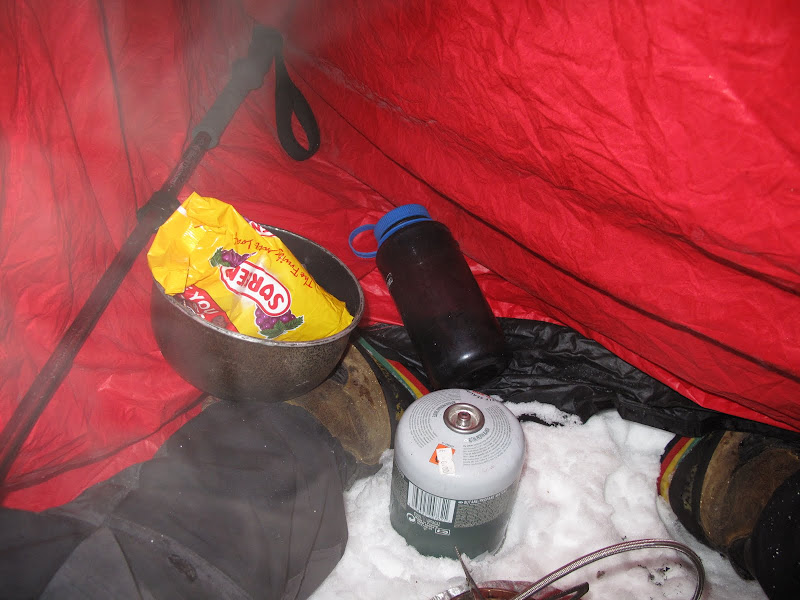
A gentle breeze tempted me inside my bothy bag to get some tea and food on the go. I'd underestimated the logistical difficulties involved in cooking inside a bothy bag. It gets quite warm inside but the steam freezes on the fabric then flakes off and melts, making the inside slightly damp. It would have been far easier and more pleasant just to get my lower body inside my sleeping bag before I started doing anything else and that's the course of action I'd recommend.
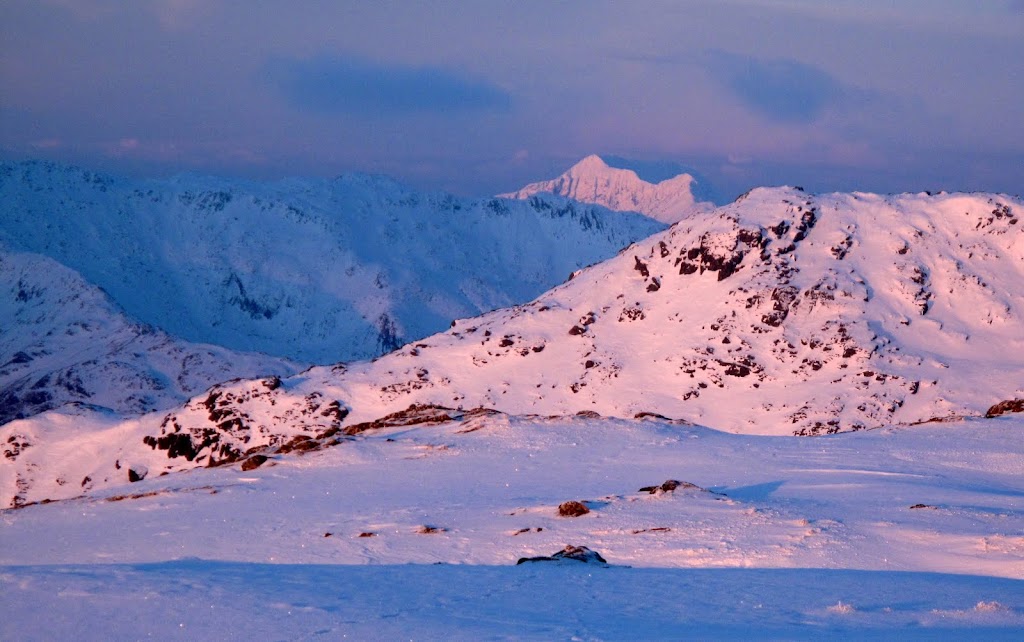
What a great view to eat my porridge to - the early morning sun catches the face of Ladhar Bheinn and the south ridge of Sgurr a 'Mhaoriach.
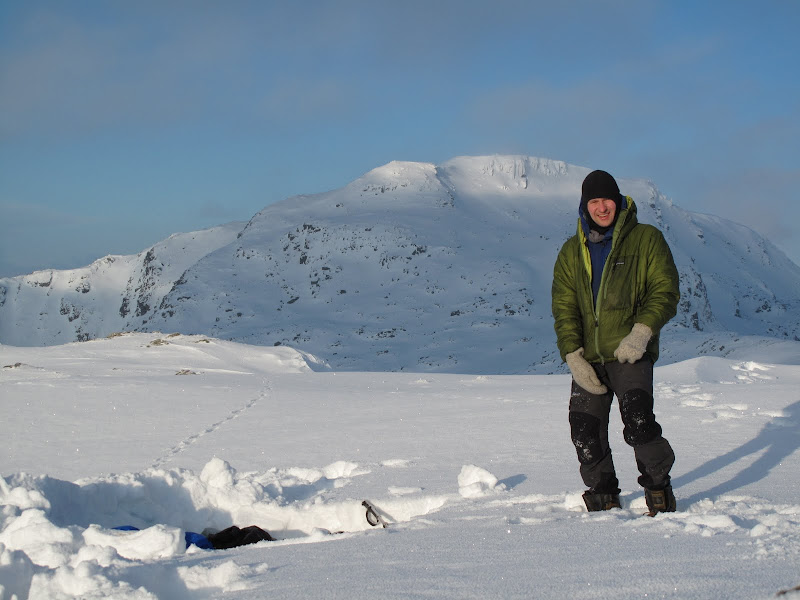
View from the bivvy site towards the heavily snow covered summit of Sgurr a 'Mhaoriach. Inside my hollow I have a warm sleeping bag (800g down) encased in a Rab Survival Zone sleeping bag cover. A good sleeping bag is essential if you want to pass a restful night in a winter bivvy, as is a full weight Thermarest and a warm belay jacket with a hood.
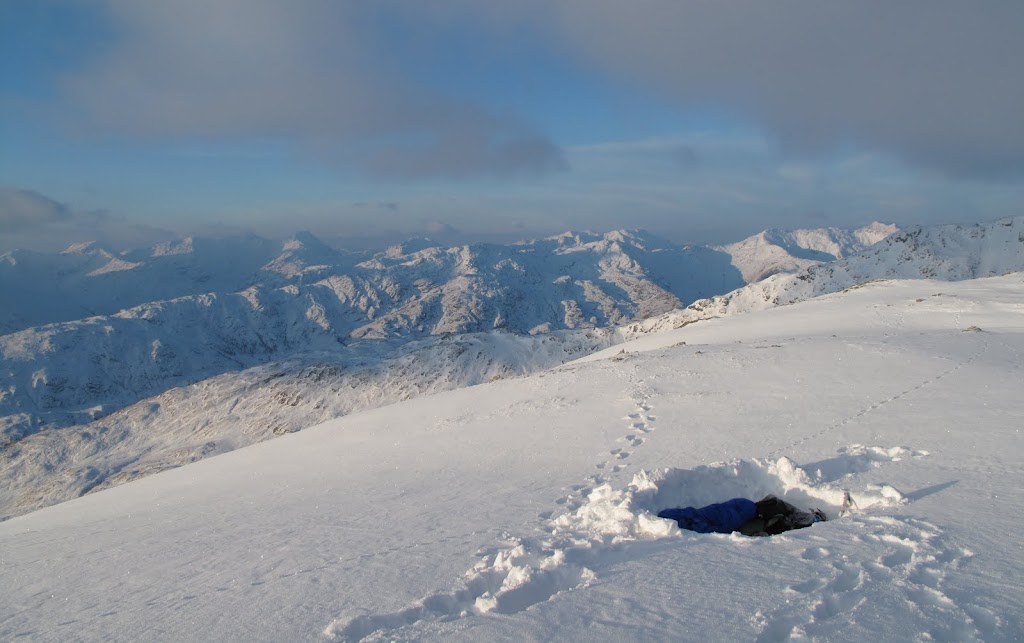
There wasn't a single light visible anywhere, the only trace of human activity was a very faint hint of light pollution from distant Fort William. I wasn't alone though - if you look carefully in the lower left corner of this photo you'll make out the tracks of a fox who passed within 2 feet of me as I slept.
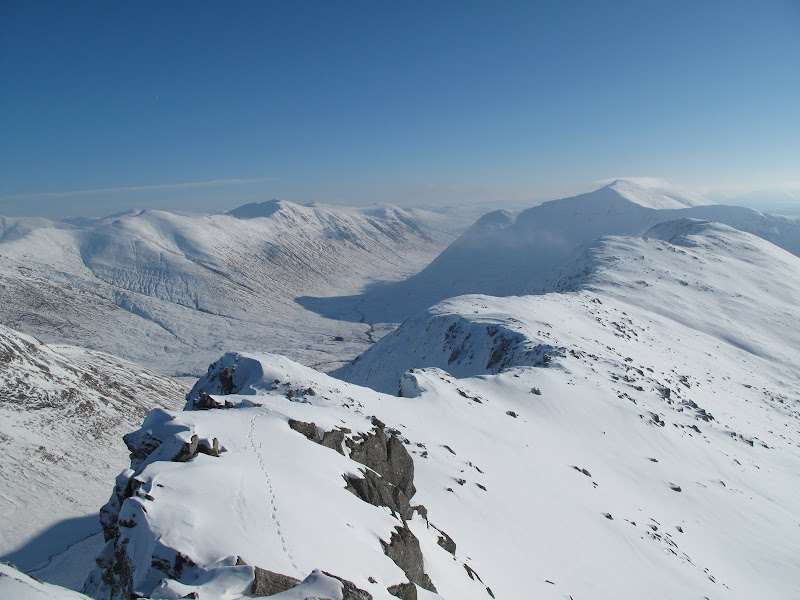
Back along the ridge to Sgurr Coire nan Eiricheallach with Glen Quoich below.
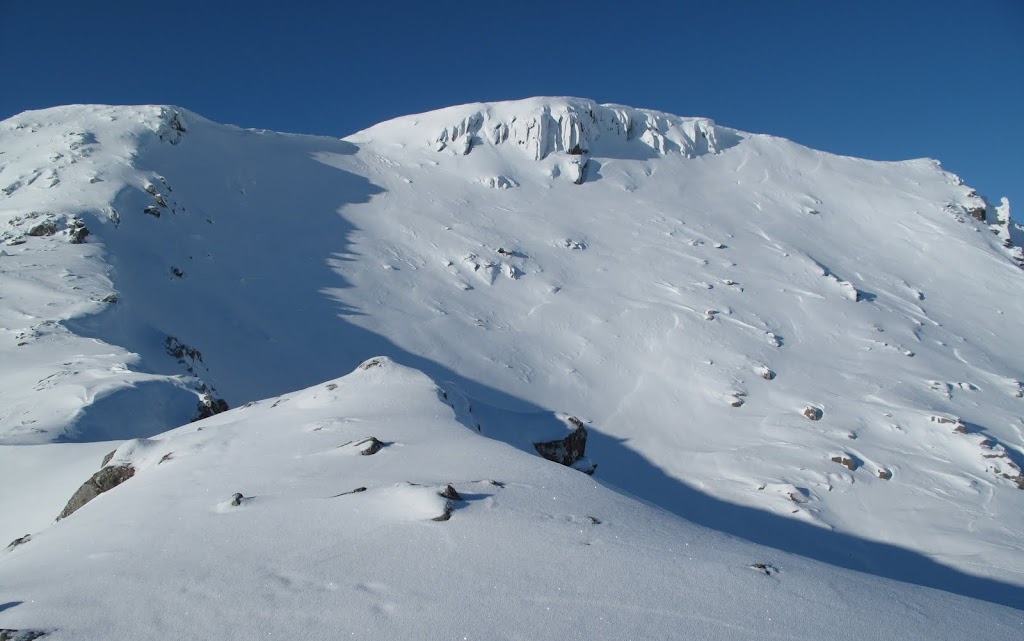
Forward along the ridge to Sgurr a'Mhaoriach.
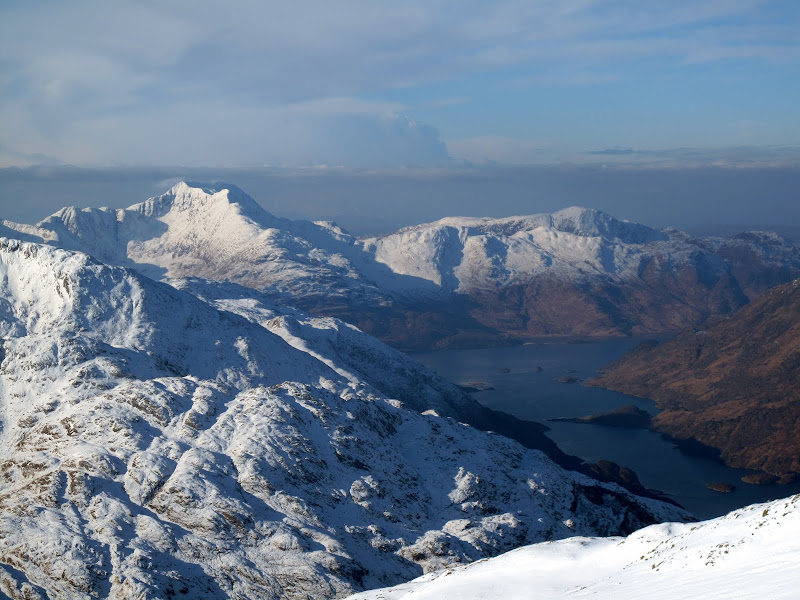
Spectacular view from the summit of Sgurr a'Mhaoriach to Loch Hourn and Ladhar Bheinn. Barrisdale Bay is to the left of the islands.
Stag with Gleouriach behind.




